What is it seborrheic dermatitis?
Seborrheic dermatitis (the American spelling is "seborrheic") is common, chronic or recurring form of eczema/ dermatitis that mainly affects the sebaceous, gland-rich regions of the scalp, face and trunk.
There are childhood and adult forms of seborrheic dermatitis. Sometimes it is associated with psoriasis (sebopsoriasis). Seborrheic dermatitis is also known as seborrheic eczema.
Dandruff (also called 'pityriasis Capitis ") is a non-inflamed form of seborrheic dermatitis. Dandruff is presented as bran scaly patches scattered inside hairCarrier areas of the scalp.
What causes seborrheic dermatitis?
The cause of seborrheic dermatitis is not fully understood. It is associated with proliferation of various species of skin diner Malassezia, in its yeast (nopathogen) shape. Their metabolites (like fatty acids oleic acid, malssezin and indole-3-carbaldehyde) can cause a inflammatory reaction. Differences in the skin barrier. lipid Content and function can represent individual presentations.
Who gets seborrheic dermatitis?
Infantile seborrheic dermatitis affects infants younger than 3 months and usually resolves at 6-12 months of age.
Seborrheic dermatitis in adults tends to start in late adolescence. Predominance it is greater in young adults and the elderly. It is more common in men than in women.
The following factors are sometimes associated with severe seborrheic dermatitis in adults:
- Oily skin (seborrhea)
- Family tendency to seborrheic dermatitis or family history of psoriasis
- Immunosuppression: organ transplant receptor, human immunodeficiency virus (HIV) infection and patients with lymphoma
- Neurological and psychiatric Diseases: Parkinson's disease, tardive dyskinesia, depression, epilepsy, paralysis of the facial, spinal nerve cable injury and congenital disorders like Down syndrome
- Treatment for psoriasis with psoralen and ultraviolet A (PUVA) therapy
- Lack of sleep and stressful events.
What are the clinical features of seborrheic dermatitis?
Infantile seborrheic dermatitis
Infantile seborrheic dermatitis causes cradle (diffusegreasy climbing on the scalp). the eruption It can spread to affect the armpit and groin folds (a type of napkin dermatitis).
- There are salmon pink patches that can peel off or peel off.
- It is not particularly itchy, so the baby is often unaffected by the rash, even when generalized.
Infantile seborrheic dermatitis
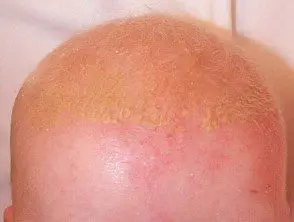
Seborrheic dermatitis
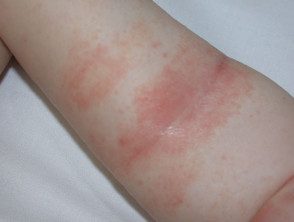
Seborrheic dermatitis
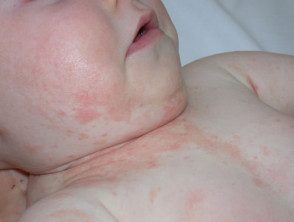
Seborrheic dermatitis
Seborrheic dermatitis in adults
Seborrheic dermatitis affects the scalp, face (wrinkles around the nose, behind the ears, inside the eyebrows) and the upper part of the trunk.
Typical features include:
- Winter flares, improving in summer after sun exposure
- Minimal itching most of the time
- Combination of oily and dry skin in the middle of the face
- Poorly defined located scaly or fuzzy patches scale on the scalp
-
Blepharitis: scaly margins of red eyelid
- Salmon pink, thin, flaky and poorly defined plates in skin folds on both sides of the face
- Flaky, ring-shaped petals or patches on hairline and previous chest
- Rash in the armpits, under the breasts, in the groin folds, and in the genital folds.
- Superficial folliculitis (inflamed hair follicles) on the cheeks and upper trunk
Extensive seborrheic dermatitis that affects the scalp, neck, and trunk is sometimes called pyloriasiform seborrhoeid.
Seborrheic dermatitis

Seborrheic dermatitis

Seborrheic dermatitis
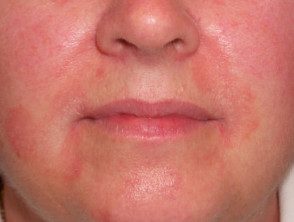
Seborrheic dermatitis

Seborrheic dermatitis
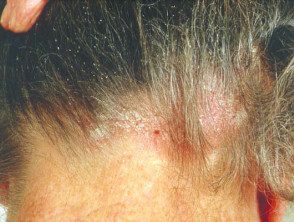
Seborrheic dermatitis
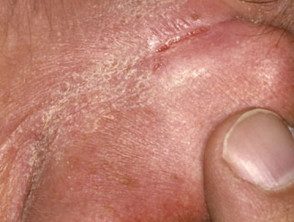
Seborrheic dermatitis
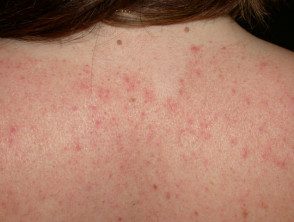
Seborrheic dermatitis
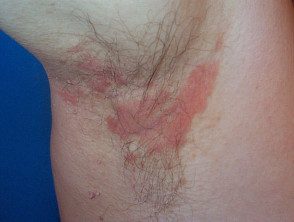
Seborrheic dermatitis
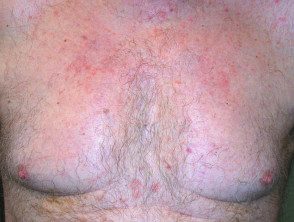
Seborrheic dermatitis
How is seborrheic dermatitis diagnosed?
Seborrheic dermatitis is diagnosed by its clinical appearance and behavior. As the malassezia are a normal component of the skin flora, its presence in microscopy skin scraping is not diagnostic.
Skin biopsy It can be useful but is rarely indicated. Histological The specific findings of seborrheic dermatitis are superficial. perivascular and peripheral inflammatory infiltrators, psoriasiform hyperplasiaand parakeratosis around follicular openings
What is the treatment for seborrheic dermatitis?
Seborrheic dermatitis treatment often involves several of the following options.
- Keratolytics can be used to remove scale as needed, for example salicylic acid, lactic acid, urea, propylene glycol.
- Current Antifungal agents are applied to reduce malasezia, for example ketoconazole, cyclopirox shampoo and / or cream. Be aware that some strains of Malassezia are resistant to azole antifungals. Try zinc pyrithione or selenium sulfide
- Mild topical corticosteroids are prescribed for 1-3 weeks to reduce inflammation of a acute flare
- Topical calcineurin inhibitors (pimecrolimus cream, tacrolimus ointment) are indicated if topical corticosteroids are often needed as they have fewer adverse effects on facial skin.
In resistant cases in adults, oral itraconazole, tetracycline antibiotics, or phototherapy may be recommended. Low-dose oral isotretinoin has also been shown to be effective for severe or moderate seborrheic dermatitis.
Scalp treatment
- Medicinal shampoos containing ketoconazole, cyclopirox, selenium sulfide, zinc pyrithione, coal tar, and salicylic acid are used twice a week for at least a month and, if necessary, indefinitely.
-
Steroid applications to the scalp reduce itching and should be applied daily for a few days from time to time.
-
Calcineurin inhibitors, such as tacrolimus, can be used as alternatives to steroids.
-
Coal tar cream can be applied to flaking areas and removed several hours later with shampoo.
- Combination therapy is often advisable.
Face, ears, chest and back
- Clean the affected skin thoroughly once or twice a day with a soap-free cleanser.
- Apply ketoconazole or cyclopirox cream once a day for 2 to 4 weeks, repeat as needed.
- Hydrocortisone cream can also be used, applied up to twice a day for 1 to 2 weeks. Occasionally, a more powerful topical steroid may be prescribed.
- Topical calcineurin inhibitors such as pimecrolimus cream or tacrolimus ointment can be used in place of topical steroids.
- A variety of herbal remedies are commonly used, but their effectiveness It is uncertain.
Management in infants
Regular washing of the scalp with baby shampoo or aqueous cream is followed by a gentle brushing to clean the scales.
- White petroleum jelly can be helpful.
-
Topical antifungals are often prescribed, depending on the extent of the rash.

